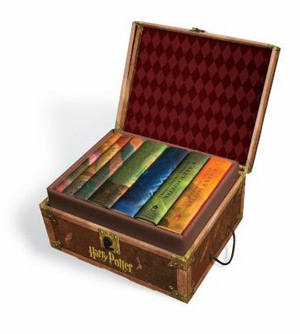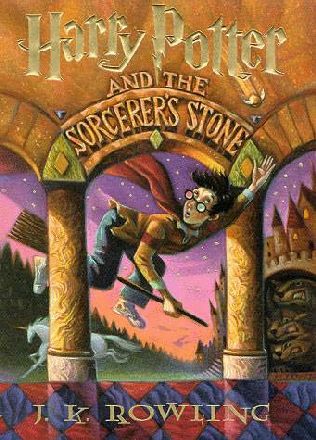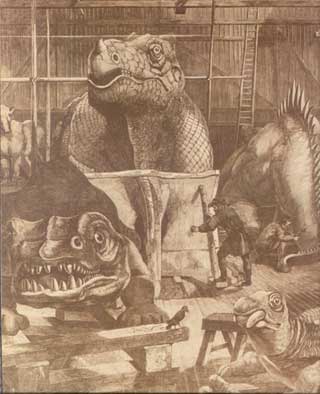
The Dust Bowl
Core Text: Out of the Dust by Karen Hesse
GENRE: Historical Fiction, Novel
ANNOTATION: This is the story of Billie Jo, a young girl growing up in
EXCERPTS:
Pg.21 “Ma has rules for setting the table. I place the plates upside down, glasses bottom side up, napkins folded over forks, knives, and spoons. We shake out our napkins, spread them over our laps, and flip over our glasses and plates, exposing neat circles, round comments on what life would be like without dust.”
Pg. 61 “Daddy put a pail of kerosene next to the stove and Ma, fixing breakfast, thinking the pail was filled with water, lifted it, to make Daddy’s coffee, poured it, but instead of making coffee, Ma made a rope of fire. Ma ran across the kitchen, out the porch door, screaming for Daddy. I tore after her, then, thinking of the pail left behind in the bone-dry kitchen, I flew back and grabbed it, throwing it out the door. I didn’t know. I didn’t know Ma was coming back.”
Pg.143 “Brown earth rained down from the sky. I could not catch my breath the way the dust pressed on my chest and wouldn’t stop. The dirt blew down so thick it scratched my eyes and stung my tender skin, it plugged my nose and filled inside my mouth. No matter how I pressed my lips together, the dust made muddy tracks across my tongue.”
Pg. 222 “And I know now that all the time I was trying to get out of the dust, the fact is, what I am, I am because of the dust. And what I am is good enough. Even for me.”
DISTINCTIVE FEATURES: The first thing that the reader will notice about this novel is that it is written in free verse poetry. This allows the book have both brevity and powerful word choice, because the author uses so few words on each page. This story is powerful and touching; it puts students in the middle of the Dust Bowl and teaches them how these people suffered but yet survived. This book is a Newberry Winner and would be an ideal class read; it is geared for students in fifth grade and up.
GENRE: Historical Fiction, Picture Book
ANNOTATION: Mathew, his father, and his grandfather are farmers who farm the plains of the panhandle. The plains are becoming as dry as they were during the 1930’s Dust Bowl. Mathew’s father and grandfather argue about whether to sell the farm. Mathew’s grandfather tells of the struggle to survive during the Dust Bowl. Many people moved away during that time, but Mathew’s grandparents stayed through the hard times. Eventually they saw rain and good harvests once again. At the end of the book, the three farmers decide to remain and work the farm, knowing that good times will come again soon.
EXCERPTS:
Pg.5 “When your grandma and I first farmed this land, we were young. We thought we had discovered gold in those fields of waving wheat. The world needed that wheat, and we wanted to grow enough of it for everyone.”
Pg. 12 “That wind blew for two solid weeks, blowing from the four corners of the world, blowing the land out from under our feet. It was the Big Dry. You had to see it to believe it, Mathew. It turned our world into a dust bowl. It blew doors open, broke windows, and even flattened a barn or two.”
Pg. 19 “For some, farming was becoming a slow way to starve.”
DISTINCTIVE FEATURES: David Booth’s writing style is simple and relatable. He captures the “strength and human spirit” it takes to survive struggle. The vocabulary he uses in the story would also be a valuable teaching tool for students to learn about the prairie. Words such as prairies, prairie schooners, furrows, drought, and jalopies could be looked up and defined by the students as a great way for them to learn more about the Dust Bowl. Karen Reczuch’s illustrations are also beautiful and capturing. The reader will get a great visual of what the prairie looked like during the Dust Bowl. Her paintings show the browns and oranges of the swirling dust as a back drop for her determined and life like characters. Her illustrations consist of single and double page spreads. These two features combine to make this a great and understandable teaching tool. This book is written on a third grade reading level.
GENRE: Biography, Picture Book
ANNOTATION: This book is a tribute to Woody Guthrie’s most famous song, “This Land is Your Land.” The song lyrics are paired with Kathy Jakobsen’s amazing paintings to create a memorable and touching book.
EXCERPTS:
Pg 13-14 “When the sun came shining, and I was strolling, And the wheat fields waving and the dust clouds rolling, As the fog was lifting a voice was chanting: This land was made for you and me.”
Pg.21-22 “In the shadow of the steeple I saw my people; By the relief office I seen my people; As they stood there hungry, I stood there asking, I this land made for you and me?”
Pg.27-29 “This land is your land, this land is my land, From California to the New York Island; From the redwood forests to the Gulf Stream waters, this land was made for you and me.”
DISTINCTIVE FEATURES: This book begins with a note form Nora Guthrie, Woody’s daughter talking about the creation of this book, her father, and his songs. The illustrations are all beautifully painted double page spreads that perfectly complement the lyrics of the song. Kathy Jakobsen researched Woody’s life and all of his songs, and included elements from both in all of her illustrations. At the corners of various pages in the books, she has included a border with more of Woody Guthrie’s song lyrics. Her paintings are done on oil on canvas. The painted borders were inspired by notch carvings found in traditional “tramp art.” (Boxes, picture frames, and mirror frames crafted by tramps, hoboes, miners, and lumberjacks in the mid 1900’s.)The book also contains a tribute by Peter Seeger. It tells more about Woody’s life and his songs. A copy of the song is also included in the book along with a CD of Woody Guthrie singing several of his most famous songs, including “this land is your land.” This would be a great book to use to help teach the Dust Bowl, because Woody Guthrie experienced this first hand. He lived in the Panhandle States and later moved to
GENRE: Historical Fiction, Picture Book
ANNOTATION: Leah is a young girl living in the Prairie states during the Great Depression and the Dust Bowl. She sells her prized pony, “the finest pony in the county,” in order to get money to save her father’s tractor during their farm auction. Leah’s courage and selflessness inspired others to help their family save their farm as well. In the end Leah was rewarded for her kindness by getting the pony she had sold back, with a note that thanked her for her sacrifice and encouraged her that these hard times wouldn’t last forever.
EXCERPTS:
Pg. 7 “The year the corn grew no taller than a man’s thumb, Leah’s house became very quiet. Sometimes on those hot, dry nights, Leah heard Papa and Mama’s joshed voices whispering in the kitchen. She couldn’t understand the words but knew their sad sound.”
Pg.11 “One hot, dry, dusty day grasshoppers turned the day to night. They ate the trees bare and left only twigs behind.”
Pg.14 “They’re going to have an auction, Leah. They’re going to sell the cattle and the chickens and the pickup truck.”
Pg.26 “Leah watched as friends and neighbors bid a penny for a chicken or a nickel for a cow or a quarter for a plow. One by one, they gave everything back to Mama and Papa.”
DISTINCTIVE FEATURES: This book is a fictional tale of a real time. Leah is such a loveable and relatable character. She pulls the reader into the story with her, and they experience firsthand her love for her pony, her worry over the auction, and her selflessness of selling her pony. The author’s writing style is straightforward and understandable. The painted illustrations are single and double page spreads that accurately portray this time period. The Dust Bowl pictures are hazy with dust and the fields are shriveled up and dead. The author’s note at the end is also helpful to understanding the story and its setting. The book is written in a second to third grade reading level.
GENRE: informational text, picture book
ANNOTATION: This is an informational text that discusses the Dust Bowl years in detail. It discusses the cause of the dust problem, the rising temperatures, the main states affected, living conditions, and the nation’s response. It also defines terms such as black blizzards, Black Sunday, and “okies”.
EXCERPTS:
Pg.5 “Suddenly a huge black cloud covered the sun. It moved faster than a car racing down the street. The cloud roared across the fields. It swallowed up birds too slow to fly out of its way. The cloud was a storm filled with dirt. It was a deadly black blizzard.”
Pg.9 “People felt like they were drowning in the dust.”
Pg.27 “There hasn’t been a black blizzard since the 1930’s. Today the Great Plain states supply most of the wheat and corn used in the
DISTINCTIVE FEATURES: This book is an invaluable teaching tool for covering the Dust Bowl. It takes you through the Dust Bowl years step by step, defining the problems caused by it and discussing important dates and details. The book also contains photographs of real farms and families that were affected by the dust. I think that this will help students grasp the reality of this disaster. The book also has side notes and important facts sections with additional information. I especially loved the final pages of the book. It had sections entitled: Just Facts, Changes in
Stanley, Jerry. Children of the Dust Bowl: The True Story of the School at Weedpatch Camp. Crown Publishers, Inc., 1992.
GENRE: Informational Text, Biography
ANNOTATION: This is the amazing true story of the immigrant (“okie”) school at Weedpatch Camp. Leo Hart, the Kern County superintendent of education, truly was an inspirational man who showed that anything is possible is you’re brave enough to fight for what is right. In the middle of the Great Depression, Leo helped these students construct their own school (Arvin Federal emergency School), a school that was theirs, where whey belonged and that they could be proud of. It had the best teachers who taught a special curriculum, its own garden and livestock to use in the cafeteria, an airplane, and a swimming pool. Leo Hart saw that these children had nothing and were despised by all, and he decide to make a difference. He gave them an education along with self confidence and invaluable memories.
EXCERPTS:
Pg.10 “It was a time of desperation. From 1930 to 1940 the number of farmers and agricultural workers in the Dust Bowl states declined by 400,000; by 1937 the unemployment rate in
Pg.25 “First the gasoline gives out. And without gasoline a man cannot go to a job if he could get one. Then the food goes. And then it rains, with insufficient food, the children develop colds because the ground in the tent is wet. I talked to a man last week who lost two children in ten days with pneumonia. His face was hard and fierce and he didn’t talk much.”
Pg.39 “One Okie father describes what it was like for Okie children in these words: Picture how you would feel with two or three children headed for school, almost barefoot, with ragged or ill-fitting clothing. You see them going down the road with a paper bag in their hands, with two baking-powder biscuits, maybe, and some beans in between. And if you were a little child how would you feel going to school that way….”
Pg. 44 “I could never understand, Leo said, why these kids should be treated differently. I could never understand why they shouldn’t be given the same opportunity as others. Someone had to do something for them because no one cared about them.”
Pg.50 “It was something to watch (the building of the school), Leo remembered. It was the first time where they were working for something of their own. It was the first time where they could be proud of who they were and what they were doing.”
Pg.69 “The teachers made us feel important and like someone really cared, Trice Masters said. The school gave us pride and dignity and honor when we didn’t have those things. It was our school. It did a great deal to cause us to believe we were special.”
Pg.76 “You know, he (Leo) said, history is full of choices. It’s possible to achieve anything. Look at these kids and look at what they’ve become.”
DISTINCETIVE FEATURES: I absolutely loved this book! It showed what a difference someone can make in the lives of so many. The personal quotes and stories used throughout the book really made it come alive. The photographs of the












